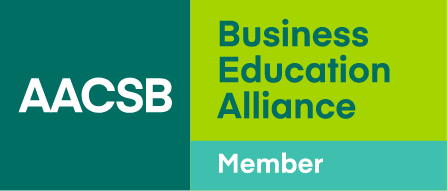Reflecting on the Leadership Journey
Leadership skills are among the most critical competencies for both MBA students and executives to master. As a business professor with a background in experimental social psychology, I believe leadership requires people to carefully explore their own beliefs as well as to communicate those beliefs to others. Therefore, my approach to teaching leadership is based on encouraging students to come to an understanding of their own personal values and goals.
When I teach leadership, the first assignment I give is called “This I Believe.” In a 350- to 500-word essay, students must describe the content and significance of their personal credos. This assignment draws from the National Public Radio series of the same name that ran from 2005 to 2009, which was based on the 1950s radio program hosted by Edward R. Murrow. Murrow specifically wanted to broadcast personal philosophies “simply and sincerely spoken” so that they might “stimulate and help” those who hear them. Each essay starts with the words, “I believe.”
Once students have articulated their beliefs, I introduce them to a series of activities designed to enable them to reflect, explore ideas, and enhance their self-understanding.
Enabling Reflection
Building leadership capacity is essentially a process of self-discovery. I help my students uncover, articulate, and understand their own definitions of leading, managing, and following. Through the process of tackling perceptive questions, they grow their leadership capital and their ability to choose the behavior appropriate to the current situation. Here are a few examples of perceptive questions:
What is your earliest leadership story? This exercise helps students uncover when and how they have demonstrated leadership behaviors. I encourage them to go beyond answers such as becoming class president or organizing a book club. Their stories reveal how they have already taken steps into the unknowable future. Later in the course, I ask them to write their most recent leadership stories and look for the common threads between the earlier and later examples.
Students uncover and articulate their own definitions of leading.
What leadership myths do you believe—and which ones might be untrue?As part of leadership development, I believe it’s important for students to examine stereotypical assumptions, such as “leaders have charisma.” I ask students to juxtapose concepts of “leader” and “manager.” What underlying meanings do they automatically ascribe to one or the other—or both? How valid are these impressions? As students begin to question their longstanding ideas, they find themselves coming up with new ideas and ways to change the way they behave in the future.
What makes you an effective follower? We tend to think of followers as being passive and uncritical—“sheep,” as Carnegie Mellon’s Robert Kelley calls them. He helps us turn this thinking on its head and realize that good followers are actively engaged in critical thinking about the tasks at hand. With that in mind, I ask students to consider three questions. Under what conditions are you actively engaged and thinking critically? How can you create conditions in which the people who report to you or work with you are more actively engaged and thinking more critically? What does it mean to contribute?
Elaborating on Ideas
When I was an assistant professor, Stanford University’s Jeffrey Pfeffer taught me about the importance of managing meaning. Among the most important ways we do this, I learned, is through the use of symbols.
One of my favorite symbols is a green pen, which I like because it’s practical and useful. I give one to all of my students. I chose a pen because I believe that if you don’t write something down, it doesn’t exist; it’s a figment of your imagination. The pen reminds them to collect the data of their experiences in writing. I chose green because, according to poet Pablo Neruda, green is the color of hope. I hope my students will become “wiser, younger”—that is, that they will develop wisdom in the present moment, because they will never be younger than they are right now.
Even faculty who don’t hand out green pens can give students assignments that require collecting data. One assignment might be to have students write their definitions of leadership, making sure they eliminate more stereotypical notions. They should start with a zero draft—that is, a draft that is more of a brainstorming session than a writing exercise. Over time, they can revisit this exercise to see how their definitions have evolved. By the end of the course, they should have gained a better understanding of themselves and the ways and the times they have had the courage to introduce change.
Enhancing Self-Understanding
When students reflect on themselves and capture the data of their own experiences, they create the capacity to make better and more thoughtful behavioral choices. They are essentially learning how to coach themselves.
The first step in enhancing self-understanding is learning to capture the “gist,” or the essence of a situation. It’s that sweet spot that’s neither concrete nor abstract—above the level of the muck and details, while solidly below the clouds. For example, when students capture the gist of a painting, they are able to figure out what it means to them and to capture its core meaning succinctly. When they capture the gist of their own histories, they are able to articulate their leadership journeys.
The first step in enhancing self-understanding is capturing the essence of a situation.
In addition to learning from their own experiences, students can gain understanding by observing other people. Once my students have practiced finding the gist of their own experiences, I have them apply the exercise to the experiences of others. One approach is through this three-step assignment:
- First, I have them consider people and behaviors they admire, and explain why. I tell them to identify someone they know or can gain access to who exhibits the behaviors they respect.
- Next, they must schedule an interview to find out more about that person and why he or she thinks a certain way or has made certain choices. They must identify the gist of the interview and write it down.
- Finally, they begin creating what I call Vicarious Learning Frameworks. They figure out a way that works for them to collect, organize, and process observations—that becomes their framework. Then they analyze the knowledge they’ve gained vicariously, and add it to the wisdom they’ve gained from their own experiences.
Putting It All Together
As students gain self-understanding, they also gain confidence. They’ve articulated their own definitions of leading, managing, and following; they’ve developed their own points of view about themes that matter to them. Because they are “wiser, younger,” they realize they know how to lead. I call this leadership capital.
When students grow their leadership capital, they become stronger from within. In this respect, I equate mastering leadership to constructing a skyscraper. Architects and engineers understand that if they are building from a solid core rather than relying on exterior, load-bearing walls, their buildings can soar to the sky. When people realize that structural integrity comes from within, they can reach amazing heights.





